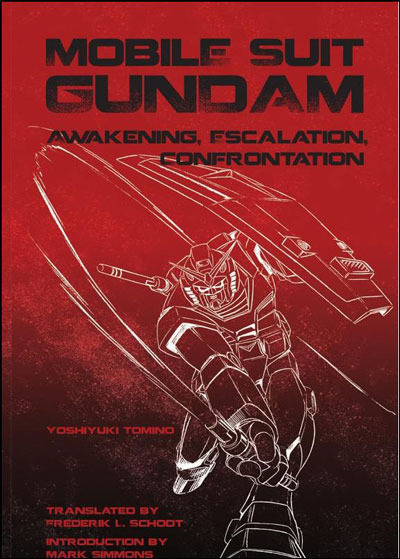Index
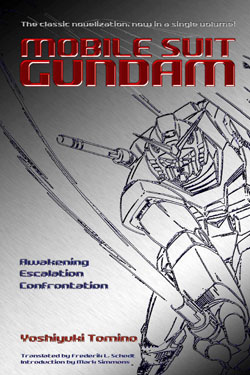
In May, 2004, the intrepid Stone Bridge Press finally issued Yoshiyuki Tomino's Mobile Suit Gundam trilogy of novels, combining all three books in a new giant single-volume format. Over 480 pages, it contained not only the UC 0079 Gundam space map, but line art illustrations of the main characters and mecha from anime production design sketches. In the over fifteen years since I first translated the series, the Gundam universe had been vastly expanded and developed commercially in both Japan and abroad, so I was also able to go back and use a list of officially determined English spellings for characters and mecha and update the text. It's fun to see the official list today, because it incorporates some of the spellings I originally used, such as Zeon, but retains others that had become popular with fans, such as Sha. The new format issue allowed me to update my original "Word from the Translator" and--much more important--it allowed us to incorporate a new introduction by U.S. Gundam expert and authority Mark Simmons (who has gone on to become a wonderful artist).
Here are the book specs. Occasionally, you can still find copies of this old edition on Amazon, and Barnes and Noble.
After a few years, the contract with the Japanese rights-holders expired, and the novel again went out of print. Scarcity creates demand, I guess, and while out of print it was amazing to see how demand for the book shot up. Fans were apparently bidding on it, so at one point on Amazon vendors were asking for nearly $1500.00 a copy. I hope that no one ever paid that much for the book, because it's now available again. Why did the book go out of print? Mainly because the Gundam property is a very complicated one, and negotiations to extend the publication rights proceeded at the speed of ancient sludge, mired in Japanese bureaucracy and unintentional obfuscation. Anything related to the Gundam novels today involves a complicated chain of rights management that includes not only Yoshiyuki Tomino, but the animation production company Sunrise, publishers Kadokawa, Bandai, the Sotsu Agency, and the Tohan Corporation, so it can take eons to get replies to even the most basic queries. The Sunrise animation studio, I might add, is now under the umbrella of the Bandai-Namco holding company.
Here are the new book specs. It has the same illustrations as the 2004 edition, but a spiffy new cover and more pages. It's slightly more compact in size, which makes it easier to hold. Design is by the talented Linda Ronan, of Stone Bridge Press. We're hoping to be able to keep this edition in print for a long time, so if you're a Gundam fan, please spread the word!
Media Praise:
...[T]he characters are deeply layered, with complex motivations and beliefs. Jealosy, family rivalry, sex, lust for power, suspicion, fear, and a host of other all-too-human attributes influence the flow of the narrative, with the fog of war confusing the judgements of both sides.... this book is ultimately a page-turner.... Andrew J. Weber, in The Asian Reporter, V14, #40 (September 28, 2004), p. 11.
"Mobile Suit Gundam was and remains a captivating epic saga ... "Gundam viewers can enjoy a rendition that departs significantly from its animated counterpart ... Highly recommended, especially for "Gundam anime fans." Library Bookwatch
There is enough new stuff here to keep even a hardened fan engaged. ...Even for a casual read, the novel remains true to the spirit of the series, while remaining fresh enough to be exciting.AnimeFringe
Gundam viewers can enjoy a rendition that departs significantly from its animated counterpart...yet retains the visionary science fiction themes of exploration, change, and the struggle to adapt and survive in a technology-driven era scarred with conflict. —Midwest Book Review
The novels allow Tomino to explore the world of Mobile Suit Gundam in greater depth than either the anime or the manga; some of the specifics about the characters and their motivations can be found nowhere else.Experiments in Manga, 2013-09-20.


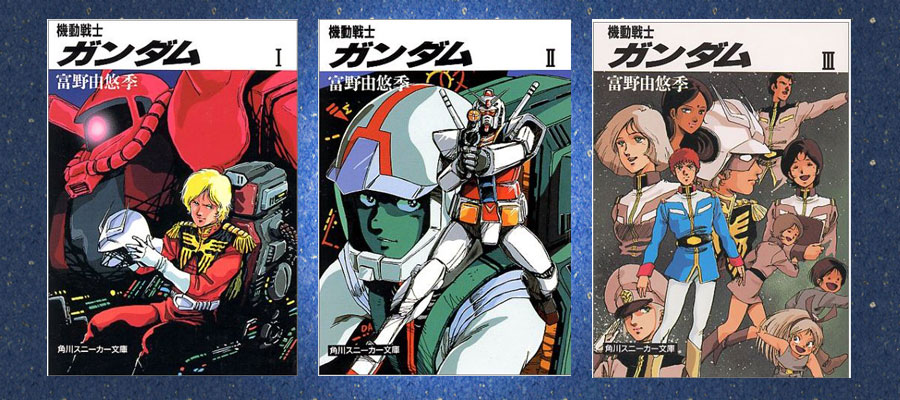

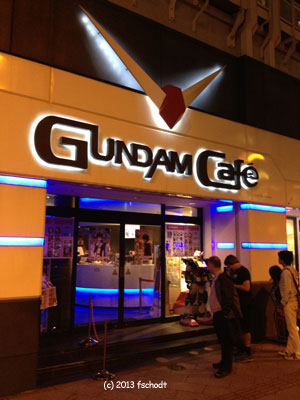

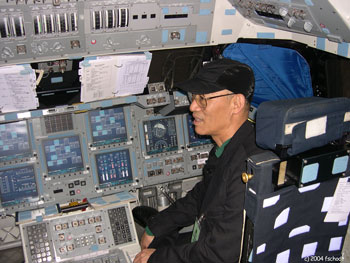 [Photo shows Tomino in the space shuttle, at Nasa's Johnson Space Center, Houston, Texas, 2004.]
[Photo shows Tomino in the space shuttle, at Nasa's Johnson Space Center, Houston, Texas, 2004.]